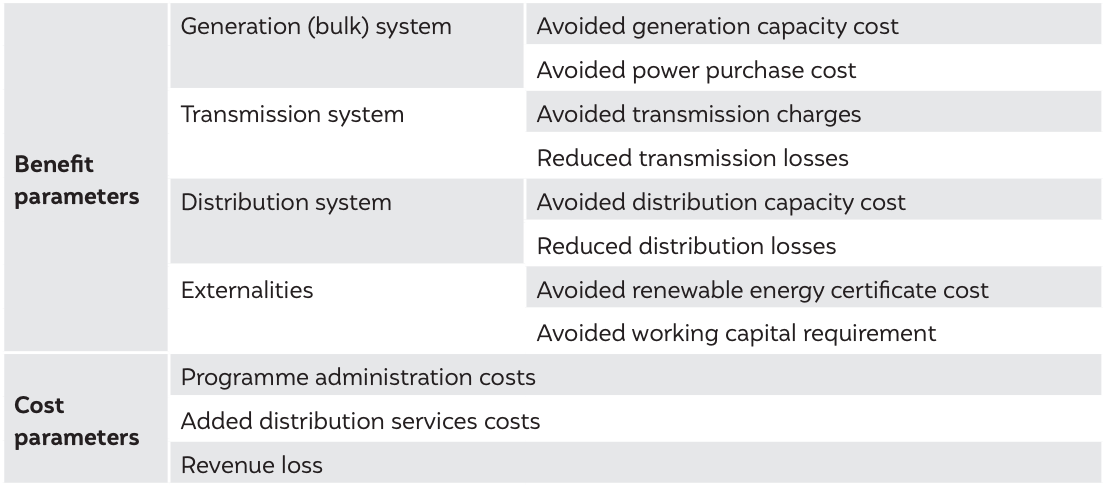Report
Valuing Grid-connected Rooftop Solar: A Framework to Assess Cost and Benefits to Discoms
Neeraj Kuldeep, Kumaresh Ramesh, Akanksha Tyagi, Selna Saji
September 2019 | Energy Transitions, Power Markets
Suggested citation: Kuldeep, Neeraj, Kumaresh Ramesh, Akanksha Tyagi, and Selna Saji. 2019. Valuing grid-connected rooftop solar: A framework to assess cost and benefits of rooftop solar to Discoms. New Delhi: Council on Energy, Environment and Water.
Overview
The study, undertaken in collaboration BSES Rajdhani Power Limited (BRPL) and supported by Shakti Sustainable Energy Foundation, presents a framework to assess the costs and benefits to distribution companies (Discoms) from increasing rooftop solar (RTS) installations. The framework - Valuing Grid-connected Rooftop Solar (VGRS) - included factors such as procurement costs for capacities added under new power purchase agreements, variable costs paid to generators, transmission charges, distribution capacity upgradation costs, working capital requirements, renewable energy certificate costs, transmission and distribution losses, and revenue losses.
The real value of the various inherent benefits offered by an RTS system, to a Discom, depends on the location and time of generation and consumer tariff slab. The study undertakes a detailed assessment across 10 different distribution transformers assessing solar installations in residential, commercial, industrial, government and institutional consumer categories. VGRS based mechanism will support equitable distribution of costs and benefits offered by a RTS system enabling a sustained growth in the sector.
List of benefits and costs considered in the UCT

Source: Authors’ analysis
Key Highlights
- Rooftop solar electricity substitutes the most expensive energy procured by the discom at any given time interval if the discom follows a merit-order dispatch.
- The total inherent benefits of a rooftop solar system outweigh the revenue loss to discom. BRPL gain amounts to INR 0.22 /kWh for every unit of electricity being generated from rooftop solar.
- The higher share of rooftop capacity in commercial and industrial categories, about 36 MW of total 45.18 MW capacity, limits overall benefits to discoms
- RTS installations from residential consumer category tend to offer maximum benefit to the discom. Residential distribution in BRPL area offered net gain of INR 0.75/kWh.
- Revenue loss in the residential category is lowest among all the consumer categories. BRPL loses INR 1.08-1.92 for every unit of solar electricity being generated by a residential consumer. The loss in the industrial category is INR 1.74/kWh and in commercial category is INR 1.92/kWh. Revenue loss in any consumer category is proportionate to their electricity tariff rate.
- Savings on power procurement cost and avoided cost of renewable energy certificate constitutes about 77 per cent of the overall benefits to the discom.
- Higher share of RTS capacity deployment in the residential category will lead to greater benefits to the discom. Discoms should promote rooftop solar among the subsidised consumer categories to maximise the benefits from rooftop solar.
- RTS contributes in reducing discom’s peak demand by about 13 per cent of its rated capacity.
- Increasing the rooftop solar penetration on a DT will increase the generation-normalised net value due to the increased impact of decongestion.
Generationnormalised aggregate costs and benefits for selected ten DTs

Source: Author’s analysis
Key Recommendations
- Increase deployment of RTS systems in residential category to gain higher benefits and savings on cross-subsidies.
- Target DTs with frequent overloading and day time peaks for rooftop solar deployment to further improve the net benefit.
- Prioritise the net export of solar power into the grid, assuming net-metering based compensation. Target consumers with large roof areas and lower overall electricity demand to achieve this.
- Promote installation of RTS systems through comprehensive and organised consumer outreach program. Ensure the discovery of most competitive cost/tariff.
- The government should implement an additional suitable compensation mechanism to encourage the discoms to undertake these activities.
RTS installations from residential consumer category tend to offer maximum benefit to the discom. Residential distribution in BRPL area offered net gain of INR 0.75/kWh.







